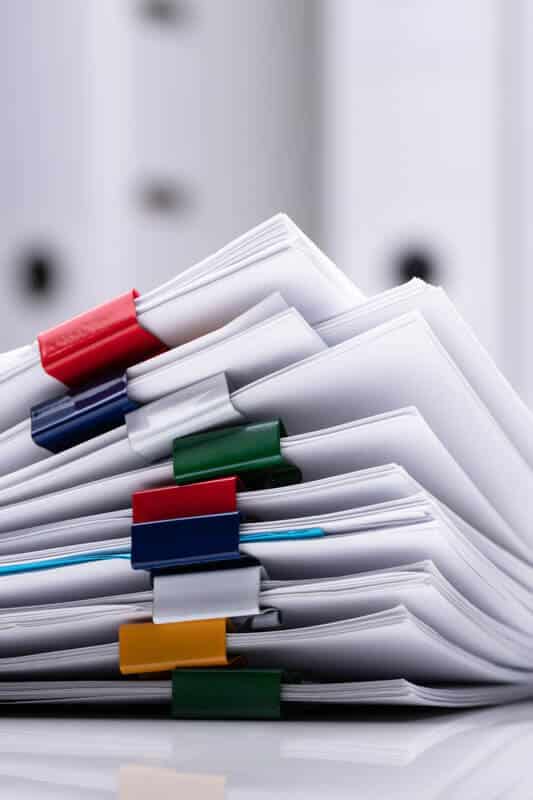Chapter 4
Combining Business Licensing and Tax Filing in One System
Chapter 1
Business Licensing
Overview
Chapter 2
Advantages & Challenges of Using Business Licensing Software
Chapter 3
Setting Up an Online Business Licensing System
Chapter 4
Combining Business Licensing & Tax Filing in One System
Chapter 5
In traditional approaches to business licensing and tax filing, business owners could often find themselves having to navigate a complex web of local government processes to complete registration and pay taxes. In addition to requiring industry-specific licenses and permits, there are also different types of taxes a business might be subject to pay. Understanding and managing these licensing and tax filing requirements can be time-consuming and confusing, especially for entrepreneurs who are just starting out.
For jurisdictions that collect tax revenue from businesses, having one system for both business licensing and tax filing means local governments can deliver a better user experience to business owners and improve process inefficiencies for staff. Here are some of the other ways local governments benefit from using one system for business licensing and tax filing:
Improved Compliance Monitoring
A joint online business licensing and tax filing system can improve overall compliance with local regulations. This is due in part to giving business owners an easier way to fulfill their tax and licensing obligations with the help of a single, user-friendly portal.
For a community’s business owners, this means:
- They can easily access a list of any upcoming or outstanding tasks, such as a license renewal, required paperwork, tax payments, and so on.
- They do not have to set up multiple accounts or keep track of two entirely different sets of instructions for licensing and tax filing processes.
With one system for both, local governments have the ability to monitor license and tax filing statuses—keeping track of which businesses are in compliance with local regulations and when additional outreach efforts might be necessary.
Increased Revenue Collection
An added benefit of improving compliance rates is higher revenue collection since more business owners are submitting their tax payments and licensing fees. In addition to this, tax software can help increase revenue by addressing underreporting or incorrect calculations of the amount of tax owed. Manual processes are often more prone to mathematical errors but online systems, in contrast, offer built-in error checks and validations that reduce the number of mistakes on tax forms.
Furthermore, online business licensing and tax solutions that offer a way to send automated reminders or notifications to businesses will enable staff to communicate with citizens regarding upcoming filing deadlines and payment due dates. The timely prompts help business owners stay on top of their tax obligations, reducing late or missed payments. This helps governments collect revenue promptly, avoiding the need for additional collection efforts. These cost savings can be channeled towards revenue-generating initiatives or public services.


Better Reporting Capabilities
Maintaining one centralized system simplifies the reporting process in its entirety, allowing local governments to quickly run reports around revenue collection and compliance statuses of businesses. Staff can more efficiently track high-priority concerns, such as which business owners have paid taxes and which still have outstanding amounts due. Software with robust reporting capabilities can also help jurisdictions identify and understand industry trends in the community. This is one of the reasons why implementing a system with the right reporting capabilities is a must for government agencies that are expected to have accurate license and tax information readily available.
Significant Time Savings
The traditionally manual tasks associated with licensing and tax can strain administrative resources and overburden the government employees managing these paper processes. By transitioning to an online system, governments can automate various aspects of licensing and tax filing, reducing administrative burdens, and helping with tasks like:
- Applications
- Renewals
- Tax filings
- Payments
Using one system can mean faster turnaround times for citizens following application and payment submissions. The system also saves time by eliminating the need for staff to manage multiple systems or platforms. A streamlined process means form submissions are processed more efficiently and accurately, allowing businesses and government staff to focus on other important tasks.
The Benefits of Using One System for Business Licensing and Tax Filing are Clear
There are numerous benefits to implementing a combined business licensing and tax filing system. From cost savings and improved accuracy to better reporting capabilities, businesses and local governments both benefit from streamlining these important operations.
With one system where business owners can go to complete licensing and tax filing tasks, jurisdictions save time and resources that would otherwise have been spent navigating complex and confusing requirements. By simplifying the paperwork and bureaucracy involved in starting and operating a business, local governments can encourage greater compliance and help entrepreneurs focus on what really matters to them—seeing their business flourish.
Success Story
How Okaloosa County, FL Uses the GovOS Business Licensing & Tax Application to Collect and Manage Over $30M in Annual Tourist Development Taxes